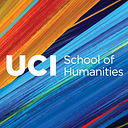5 nonbinary Byzantine figures to know
Expand your understanding of LGBTQ+ history with these nonbinary figures from the Byzantine Empire

While the term “intersectionality” was coined in 1989 by Kimberlé Crenshaw, the existence of marginalized and nonbinary identities extends back over millennia. In fact, medieval writers, philosophers, theologians and doctors studied what we may think of today as modern issues including trans and nonbinary gender identities. In his forthcoming book, Byzantine Intersectionality: Sexuality, Gender, and Race in the Middle Ages (Princeton University Press, 2020), Roland Betancourt, an expert on Byzantine art and visual culture and a professor of art history and visual studies at UC Irvine, explores these topics and some of the key nonbinary figures in the Byzantine Empire.
Here, meet five prominent figures profiled in his book.
Emperor Elagabalus
Although Emperor Elagabalus only ruled over the Roman Empire for four years before being assassinated, Elagabalus left a lasting impression on history as the most documented transgender figure in Late Antiquity. Medieval historians tell us that Elagabalus not only dressed in women’s clothing, followed women’s grooming practices, and asked to be called by a typically female name, but also sought out gender affirming surgical procedures. As John Zonaras, a Byzantine historian, wrote, Elagabalus “asked the physicians to contrive a woman’s vagina in his body by means of an incision, promising them large sums for doing so.”
Hilarion the Eunuch
The stories concerning trans monks, whether real or legendary, provide an idea of what a transgender identity looked like to the Byzantine imagination. Rather than being limited to dress and grooming, many of these trans monks altered their bodies into more masculine forms. For example, the story about Hilarion the Eunuch and others suggests that changes caused by deprivation and malnutrition could shrink the appearance of breasts and end menstruation.
Michael Psellos
As the philosopher of the imperial court and one of the most learned figures in Byzantine history, Michael Psellos understood that their assigned gender was often in conflict with how they felt. Psellos wrote that despite holding a role as a philosopher, traditionally associated with men, they identified as female in matters of emotion, affect and social behavior. Across various letters to friends, Psellos eloquently describes their identity as being genderfluid and nonbinary. What makes Psellos extraordinary is that they tested the boundaries of what it meant to perceive a transgender subjectivity in the Byzantine world and offered commentary on gender fluidity in eleventh-century Constantinople.
Mary of Egypt
Tales and legends abound when it comes to the sexually promiscuous Mary of Egypt, whom you may know as the patron saint of penitents. While she is not explicitly identified as trans, she is often depicted in ways that blur gender and intentionally masculinize her body. She has been described as having “short white hair, like that of an elderly man” and authors often note her bodily transformation through harsh ascetic practices, making her figure more masculine according to gendered ideas about bodily appearance in the period, such as the darkness of skin. Mary of Egypt’s story is important because of how it can help us understand the ways in which gender, sexuality and race were interlaced across Byzantium.
Leo sakellarios
Prominent eunuchs were a common feature of the Byzantine court who existed in their own gender category. Eunuchs were often high-ranking officials in the imperial court and members of the clergy, known for their patronage of the arts, extreme erudition and political power. Leo sakellarios, for example, was a high-ranking eunuch who served as treasurer of the Byzantine Empire. We remember Leo today for their erudite correspondences with the court and for having commissioned one of the only extant illuminated copies of the full text of the Old and New Testaments, a manuscript now partially preserved at the Vatican Library.
Officially out October 6, 2020, Byzantine Intersectionality: Sexuality, Gender, and Race in the Middle Ages is available for pre-purchase now.
Follow Betancourt on Instagram @profbetancourt and on Twitter @profbetancourt.
